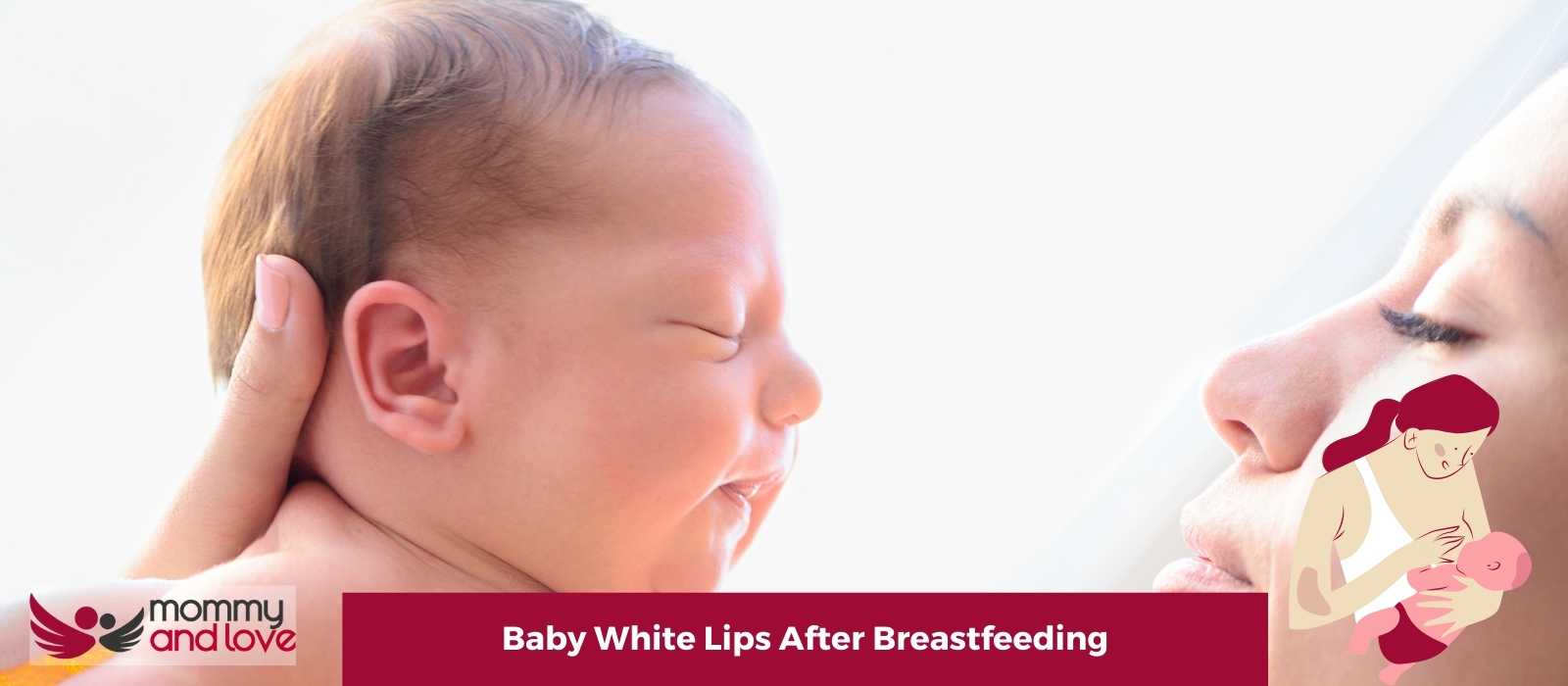As you finish up a nursing session, you notice your baby’s white lips after breastfeeding.
Perhaps this has made you panic, but relax! In this post, we will look at the reasons your baby’s lips might be white after a feed, when you should be worried and what you can do.
What Causes White Lips

The lips are actually one of the most sensitive parts of the body; the skin on the lips is thinner than any other place in our body.
Many breastfeeding mothers wonder what are the causes of white lips after breastfeeding in baby’s early days. Usually, it may appear shortly after a breastfeeding session. The area around the baby’s lips may be dry and cracked which makes the area look white in color.
Remember that nursing is actually hard work for babies too! Your baby’s entire mouth is working hard to extract milk, with the baby’s lips and tongue massaging the breast to stimulate milk flow.
Sometimes this causes chaffing and dryness around the inside of the cheeks and the mouth, lips and baby’s tongue, or even mouth sores due to a lack of moisture in your baby’s mouth.
Occasionally, peeling skin, chapped lips, and red rash can occur, these are all signs that latch could be improved.
There are some things to do and avoid while breastfeeding your baby that may help you if white lips after breastfeeding become an issue. If you’re after some general breastfeeding support, read our post all about tips for successful breastfeeding.
Why Are My Baby’s Lips White After Feeding?

Do your baby’s lips look white after breastfeeding? More often than not, white lips on babies are a sign of excessive drooling or spitting up. Does it wipe or quickly fade away?
Don’t panic if you see white on your baby’s lip; there could be several reasons for it – most of them easily solvable.
But what are the possible causes? There are several possibilities:
- Your baby has a cold or infection
- Due to milk residue
- Due to oral candidiasis ie thrush
- Due to milk spots
- Due to a cold sores
- Your baby doesn’t get enough vitamin A during pregnancy
- Babies have been exposed to food allergens from sippy cups, pacifiers, and bottles
Is It Normal for a Baby’s Mouth To Be White?
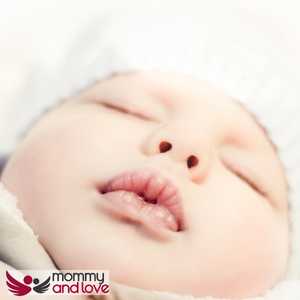
Have you ever noticed your baby’s mouth turn white after breastfeeding?
If your baby is a breastfed infant, you may notice white tongue and lips appear after feeding. This can occur in the first few weeks after birth as well as after about three months of breastfeeding.
White patches could simply be a sign of sucking blisters, which will go away on their own- work on latch to prevent them!
Rarely, it might be that your baby has a cold sore caused by the herpes simplex virus. The herpes simplex virus, more commonly known as a cold sore, causes a painful blister on the lips or around the mouth.
This virus can be transmitted through skin-to-skin contact or by coming into contact with infected areas
Oral thush is another common cause of white patches around the mouth of breast feeding babies- you will see cottage cheese like patches, you may see these on baby’s tongue, gums, lips and roof of the mouth.
You will need to speak to your doctor for treatment for both you and baby. If you baby has oral thrush, mom will often also develop nipple thrush. This can be very painful.
A vitamin deficiency could also make your baby’s lips go white. The B vitamin niacin is particularly important for keeping lips healthy and red, as it helps deliver oxygen to tissues in the body.
Other B vitamins may play an important role in maintaining lip health as well.
How Do I Know if My Baby Has Thrush or Milk Residue?
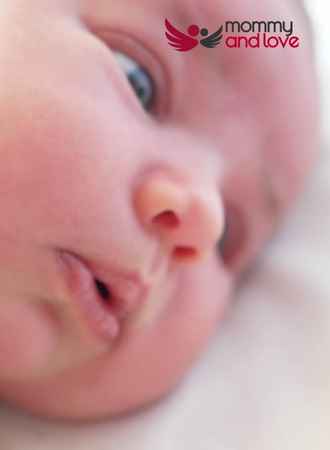
If you see your baby develop white spots or patches around the lips, it may be due to a number of reasons.
But in the case of breastfeeding babies, these are usually caused by thrush, which is caused by yeast infection.
After thrush has taken hold, creamy white or yellow patches appear on the sides, roof, gums, lips, and tongues of babies.
It is possible that the white patches on your baby’s lips may be due to milk residue from deep latch feeding.
Milk residue can form a coating on your baby’s lips when he has not been fed properly or when he still has food in his mouth after breastfeeding.
A baby who develops thrush doesn’t show any signs of discomfort and will continue to sleep, eat, and play normally.
They may also have fussy behavior from time to time because of the irritation in their mouths.
There are other signs that you can look out for if you think this might be thrush in your baby:
- White patches in your baby’s mouth are also a sign of thrush.
- You may not notice this yourself if a white coating on your nipples, is another sign of thrush.
- Your nipples might also feel sore, itchy, or inflamed after a feed.
If you suspect that this is the case, talk to a doctor about getting an anti-fungal medication prescribed by a healthcare professional for your little one.
Best Way to Prevent Milk Blemishes on Baby’s Lips
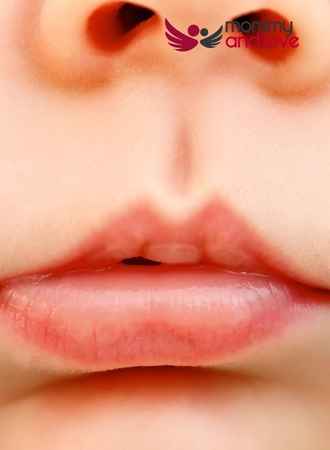
To prevent any irritation to your baby’s mouth while breastfeeding, go back to basics and ensure they have a great latch.
Speak to a lactation consultant if you need help with this.
Do not use soap on your baby’s skin and only try creams designed for sensitive skin. You can also try soothing the affected area with a soft cloth dipped in warm water and applied gently.
A humidifier may help if the air is dry in your home and causes irritability in your little one’s mouth and throat areas.
This can aggravate irritations around their mouth and make it more likely they will refuse food or become fussy when feeding.
If thrush is the issue, you will need to thoroughly treat both yourself and babym while also practising great hygiene to prevent reinfection.
Ensure to sterilise all bottles, dummies and toys and thoroughly cleanse your own bras.
Causes of Blisters on Your Baby’s Lips
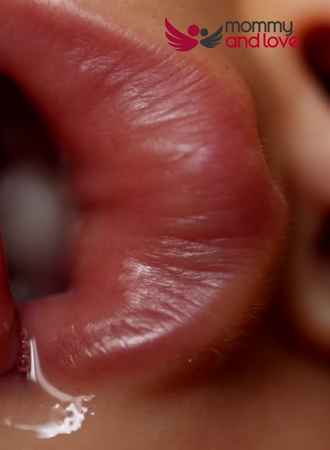
While babies are adorable and squishy, they can get some pretty weird ailments. One of the most noticeable is a row of blisters on their lips.
When a baby has suck blisters, also known as blisters after breastfeeding, often mom gets more bothered than baby is!
Often, the solution is as simple as correcting their latch. Sometimes, babies get blisters on their lips from trying to latch onto a nipple that is not centered in their mouth.
Lip blisters on your baby’s lips are a common occurrence. They are generally harmless and should not be cause for alarm, but they can be a nuisance.
They could also mean that your baby needs a little extra attention.
Cold Sores
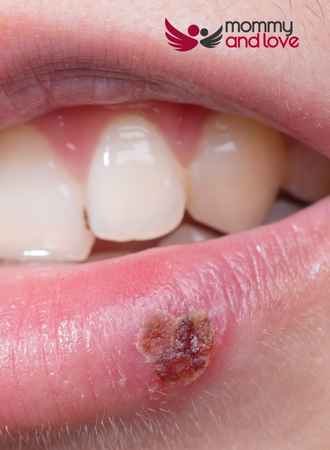
The most common cause of blisters is cold sores, which are also known as fever blisters.
Cold sores usually start with a tingling, itching, or burning feeling around your baby’s mouth and in between mouth and nose.
Blisters can also be caused by dehydration.
If your baby has been crying for an extended period of time, it’s possible that she has become dehydrated. The lack of moisture can also contribute to irritation of the skin there.
Middle ear infection
Another possible cause of blisters is a middle ear infection.
Middle ear infections and dehydration often occur at the same time.
So if you notice blisters on your baby’s lips or other symptoms along with these two problems, ask your doctor about dehydrating her orally or applying some topical hydrocortisone cream to her ears.
Signs of Blisters on Your Baby’s Lips

According to the National Health Service, blisters on your baby’s lips are characterized by a row of small blisters on either their top or bottom lip.
Lip blisters can appear in a line, which is known as a cluster of blisters. A line of blisters on your baby’s top lip and another on their bottom lip can appear after sucking for a long period of time.
Lip blisters are painful and unsightly, and they’re typically the result of a cold sore. So it’s important to provide relief before your babies start crying from the pain.
Treatment for Blisters on Your Baby’s Lips
Treating friction or suck blister on your baby’s lip involves a two-pronged approach: establish a good latch and encourage healing and prevent future blisters from forming.
Establish a good latch
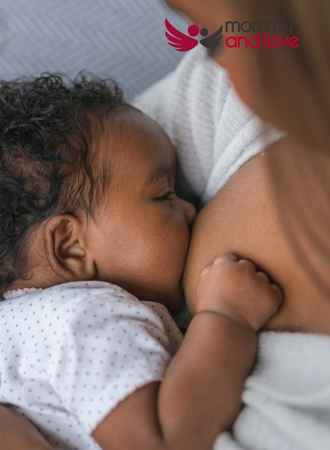
- Make sure your baby has a good latch when breastfeeding. Make sure your baby’s mouth is wide open when latching onto your breast.If his mouth isn’t wide open, use your finger to gently press down on his chin until it opens.
- Maintain a good latch during feeding.Hold him close to you so he can use his muscles to grasp around as much of the areola as possible, instead of just using his gums to hold on tightTry different positions—try leaning back (like in a recliner) or lying down with your baby on top of you.
Encourage healing
- Use lanolin cream to treat the blisterApply lanolin cream to any affected areas on your baby’s lips to help heal the blister and prevent any discomfort while you continue breastfeeding. Lanolin is safe for use around the mouth and will not irritate your baby’s lips or gum tissue in any way.
- Moisturized baby’s lips with natural oilsRub a few drops of natural oils such as coconut oil or olive oil onto the upper lip and lower lip for effective protection against dryness that won’t leave behind any greasy residue
When Breastfeeding Blisters Are an Emergency
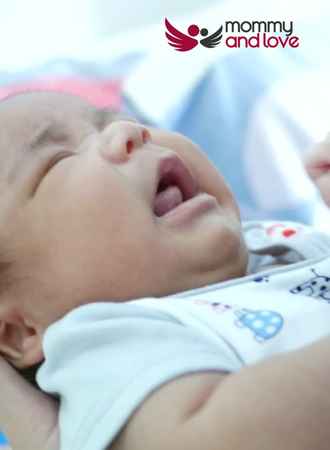
White lips on a baby can be alarming, but it’s usually nothing to worry about.
In most cases, white lips on a baby are some type of irritant contact dermatitis, which is an allergic reaction to something that touched the skin.
The severity of the problem will vary from child to child. An uncommon cause for this is a food allergy or sensitivity in the mother that the baby ends up ingesting through the breast milk.
It could also be from medication or vitamin the mother took that isn’t being processed properly by the baby because of their young age and undeveloped digestive system.
Sometimes, this can be a sign of an underlying medical condition.
If you’re unsure whether your child has a more serious problem or if you cannot get rid of the cracked lips after trying all other methods, consult with a doctor.
If the white lip is caused by dryness or dehydration due to prolonged sucking, it may be treatable with some over-the-counter medications or at-home remedies.
These methods won’t necessarily remove the spots immediately but they will help to heal faster so that they can eventually disappear on their own.
Takeaway: Baby White Lips or Lip Blisters After Breastfeeding Can Be Soothed and Treated
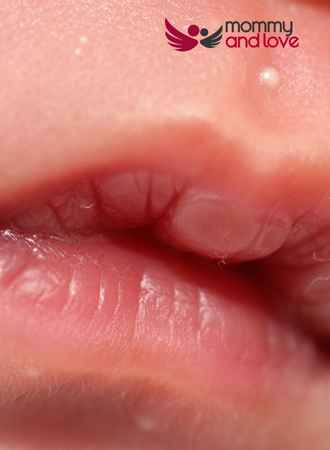
Whether this is merely white lips caused by friction while feeding or something more serious, there are steps that can be taken to help your baby.
White lips can happen for a number of reasons, including vitamin deficiency, oral thrush, or yeast infection. In some cases, it may be due to a reaction to food or medication.
If the problem persists and doesn’t respond to over-the-counter remedies, take your baby to the pediatrician or lactation consultant.
It could be a sign of oral thrush or another virus that requires medical attention. For extra relief, you can apply petroleum jelly to the affected area several times each day.
White lips are common in breastfed babies and are usually not serious unless they become too dry (due to vigorous sucking) and cause cracking and bleeding. The condition is often caused by the shallow latch and frequent nursing sessions from breastfeeding mothers.
But don’t go thinking that this means your milk isn’t best for baby! We’ve actually got a great blog post about breastfeeding and eczema which will show you just how great breastmilk is at soothing irritation!
To help soothe white lips and prevent further damage, wipe the baby’s mouth with cold water followed by applying a moisturizing lotion or coconut oil after each feeding session.

This article was written by Sandra Baker – full time writer and the mother of four amazing kids (including twins!)
She’s also a breastfeeding counselor and has spent years helping new parents learn how to care for their children. When she’s not writing or caring for her children, Sandra likes to spend time reading and taking walks with her husband.

